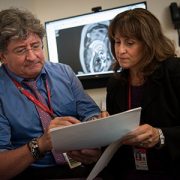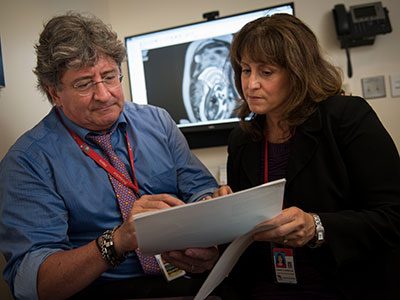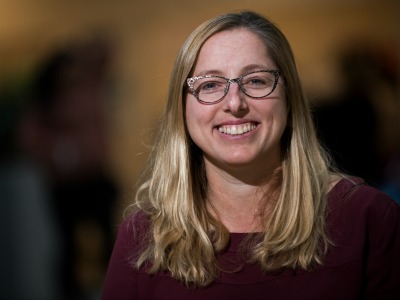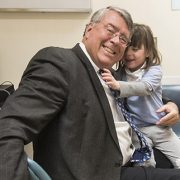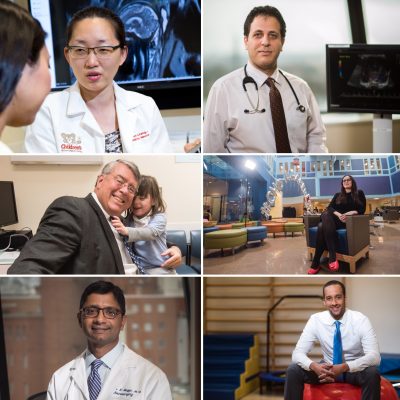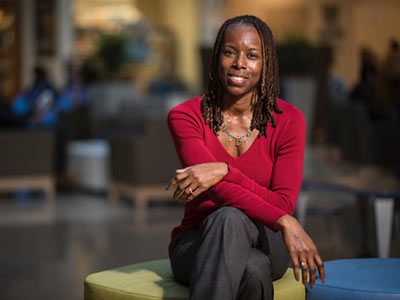Building resilient kids through healthy adults

Mr. Lane, Dr. Hodgkinson, Dr. Biel, and Dr. Beers provided a briefing at the Washington, D.C., City Council in July about the Early Childhood Innovation Network, which takes evidence-based national models for early childhood mental health interventions and adds components designed to address Washington, D.C.’s unique needs.
Exposures to adverse childhood experiences are the single biggest predictor of outcomes for physical health, mental health, social functioning and academic achievement in children and into adulthood. There is evidence that negative experiences – such as poverty, housing insecurity, having a parent with untreated mental illness or actively engaged in substance abuse – have biological impacts on a child’s brain size and function.
Conversely, during the critical first few years of life, safe, stable and nurturing relationships from adult caregivers build healthy brains, even in the midst of adversity. Additionally, the ability of a child’s brain to absorb experience and to change means that early intervention to reduce exposure to or impact of these negative events can be particularly effective for young children. In a briefing for the Washington, D.C., City Council, leaders from the Early Childhood Innovation Network (ECIN) shared these facts and outlined how ECIN’s local collaborative of health, education and social service providers promotes resilient families and children through interventions designed to work best for each family.
“We are taking evidence-based practices from other places, and then personalizing them to our communities in D.C.,” says Lee Beers, M.D., co-director of the ECIN and the medical director for Municipal and Regional Affairs within the Child Health Advocacy Institute at Children’s National Health System. “We spent a lot of time seeking input and advice from primary care doctors, social services providers and community leaders, to make sure that we bring programs to clinics like the Children’s Health Center at Anacostia that are useful, sustainable and measurable for the children and families who live there.”
The network’s other co-director, Matthew G. Biel, M.D., chief of the Division of Child and Adolescent Psychiatry at MedStar Georgetown University Hospital continues, “We know that the best way to help these kids is by addressing challenges across generations – we can’t reach children without first helping the adults. In addition to evaluating for risk factors, we also need to screen for protective factors – how families can best buffer these young children from the toxic effects of adverse childhood experiences. Then, in a non-confrontational setting such as a routine primary care visit, we can provide them with additional tools to enhance those protective factors.”
A working example: HealthySteps D.C.
Drs. Beers and Biel cited the implementation of the HealthySteps program, an evidence-based intervention with a national network of over 100 pediatric and family practice sites across 15 states, locally in D.C. as one example of ECIN’s approach. The program, now underway at the Children’s Health Center at Anacostia and recently launched at the Children’s Health Center at THEARC, embeds specially trained HealthySteps specialists into the primary care team to provide parents and professionals with skills and tools that nurture healthy development in young children.
Nationwide, HealthySteps has been shown to have a significant impact on children, families and practices at relatively low cost, providing services within the primary care setting such as:
- Early identification and access to effective interventions for development delays
- Coaching on age-appropriate parent-child interactions and child social-emotional development
- Support for parental depression, domestic violence, substance abuse, food, housing and other social determinants
- Creating better integration between pediatric primary care and early childhood systems
ECIN’s D.C.-based version takes this successful national model and adds additional D.C. needs-based specific activities:
- Each family is assigned a Family Champion who identifies and addresses specific resource needs, including mental health services, parent training, or support groups and basic needs such as insurance, housing or employment
- HealthySteps specialists offer brief interventions within the primary care setting to address pressing needs such as maternal depression, grief and loss and child behavior management
- HealthySteps specialists deliver specialized training to providers on child behavioral and developmental health
“Even in the short time since we implemented HealthySteps, we’re seeing significant impact around care coordination and case management for the families at our Children’s Health Center at Anacostia,” says Stacy Hodgkinson, Ph.D., a licensed clinical psychologist at Children’s National who serves as a HealthySteps specialist at the Children’s Health Center at Anacostia.
HealthySteps D.C. is the first of several initiatives under development by the Early Childhood Innovation Network. The group is also working together with additional community partners such as Educare, Martha’s Table, LIFT, and MedStar Washington Hospital Center to explore, implement and evaluate the effectiveness of programs in areas such as building social-emotional skills in young children, financial literacy and mental health support for mothers-to-be.
Community connections and coordination
“So many children with needs do not get connected to services, and the Early Childhood Innovation Network addresses this challenge. Even better, there has been a genuineness from ECIN to engaging community and earning buy-in for programs from the very beginning. They’ve made community leaders and parents an integral part of the network’s program design and implementation,” adds Ambrose Lane, Jr., chair and founder of the Health Alliance Network and chairman at the D.C. Department of Health Chronic Disease Citywide Collaborative.











